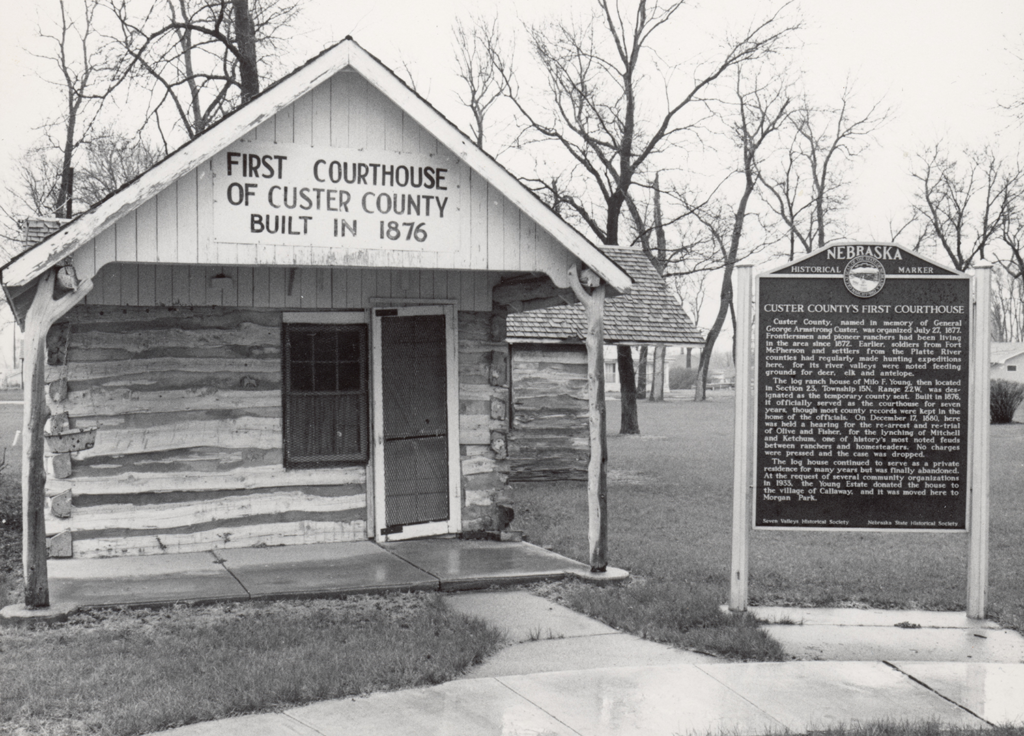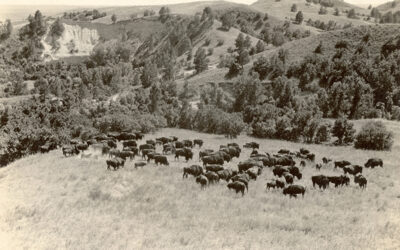Our Historical Markers across Nebraska highlight moments and places in our state’s past. Today, we’re focusing on the private residence that eventually became Custer County’s first courthouse.
Marker Text
Custer County, named in memory of General George Armstrong Custer, was organized July 27, 1877. Frontiersmen and pioneer ranchers had been living in the area since 1872. Earlier, soldiers from Fort McPherson and settlers from the Platte River counties had regularly made hunting expeditions here, for its river valleys were noted feeding grounds for deer, elk and antelope.
The log ranch house of Milo F. Young, then located in Section 23, Township 15N, Range 22W, was designated as the temporary county seat. Built in 1876, it officially served as the county courthouse for seven years, though most of the county records were kept in the homes of the officials. In it, on December 17, 1880, were held the hearings which lead to the Olive-Fisher trial for the lynching of Mitchell and Ketchum, one of history’s most noted feuds between ranchers and homesteaders.
The log house continued to serve as a private residence for many years but was finally abandoned. At the request of several community organizations in 1933, the Young estate donated the house to the village of Callaway, and it was moved here to Morgan Park.
Location
Nebr. 40, Morgan Park, Callaway. View the marker’s location HERE.




